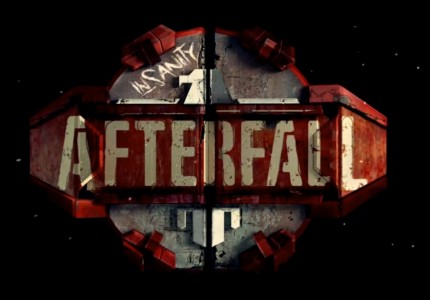
Afterfall InSanity is a post apocalyptic horror survival game from Intoxicate Studios and published by Nicolas Entertainment Group. The game is set in 2032 after an explosive end to World War III and the game was originally in development by Polish fans of the Fallout series but was the taken on by Nicolas Games Entertainment in 2008. The game is an attempt to widen the reach of indie games but will the game be something worth saving after a nuclear disaster or should it be left outside of the shelter?
Let’s find out and kick off the HOTs and NOTs of Afterfall: InSanity.
HOT
Story and Character Bonds
The story is based around a 34 year old psychiatrist and pharmacologist Dr Albert Tojak. Tojak who is the character players control is one of the many human survivors who are living in the ‘Glory’ shelter. As people start to behave oddly, you as the Dr must check it out and this is where the story begins.
The story starts on the side but like any good plot once you have started Afterfall, you will want to know how it ends. As you go through the story, players learn more and more about the characters and the back story of the game. Character bonds grow as the story progresses and the atmosphere and the way Dr Albert Tojak often has to struggle to survive means you do get slightly attached to his character as you keep him alive throughout his journey. The story is moderately compelling and players will find that in their quest for answers, more questions will be asked along the way.
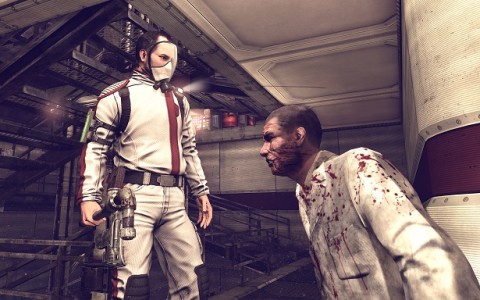
Atmosphere
Afterfall: InSanity is a horror game set in a post apocalyptic age where if the atmosphere wasn’t nailed, the game would fall apart. However, Afterfall perfectly creates an atmosphere of tension which means players are kept constantly on their toes awaiting the next attack.
The atmosphere is created by a number of outstanding presentational effects. Using lighting to highlight areas as well as casting eerie shadows throughout the game. With sections of the game being lit by only Dr Albert Tojak’s flashlight, the use of other light sources was clearly made a priority by the developers and the results are phenomenal and can be seen throughout the title. Another effect used is Afterfall’s ‘FearLock’ system which makes it harder for the player to aim during disconcerting events. This increases the overall tension as you struggle to stay alive.
However, the ominous atmosphere is mostly created by Afterfall’s in-game sounds and music. Describing the music and in-game sounds as wonderful and brilliant sounds slightly wrong despite being true; as they generate a dark and creepy atmosphere. Sinister noises surround the player, the music speeds up in pace and you know something is there. Only when you hear the scraping, grunting and shouting behind you do you know where they are. It’s the air of tension which allows the entire game to keep the players on their toe giving it the true horror attribute.
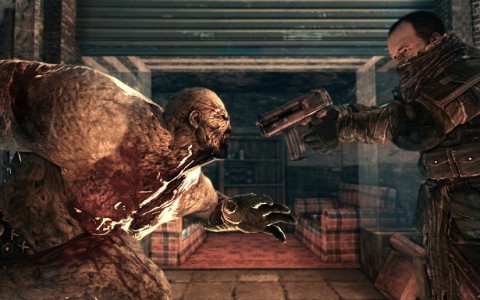
Details
The entire game has plenty of detail that not only makes the places more interesting but believable as a living and breathing locations. Notes and newspapers are left around and while they are often just small titbits, they occasionally add to the back story of what happened to the world. If you listen when walking around, the underground shelter ‘Glory’ people are always talking about something, be it about something random or about the shelter itself. Like the newspapers and note it adds slightly to the shelters back story but mostly just makes the place feel more alive.
Weapon Distribution
Weapons can be found throughout the game and melee weapons in particular are intelligently placed. It just shows the thought that went into the design process that there are certain weapons to be found in certain locations. My personal favourite the fire axe can often be found in the glass fire boxes near extinguishers; although something they are embedded into doors or boxes.
Voice work
While the voice acting is a little stiff at times, all the voices actually seem to fit the characters – something a lot of games slip up on. On the whole, the voice acting is essentially spot on and only in the cut scenes does it come undone where all the player’s attentions are on the characters. One nice feature is when Tojak puts on a gas mask the voice is noticeably different and I’m almost certain the voice actor must have do the scene with a real life mask on rather than it being an added effect. Either way, it sounds good and is just another of the nice little touches which makes the game’s experience complete.
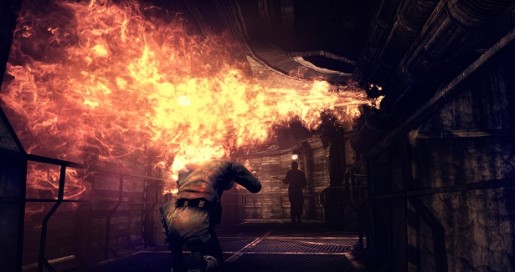
Gameplay
The gameplay is kept appealing and relatively straightforward due to a simplistic control scheme. The majority of the game will see players walking and running around from one objective to the next whilst being almost constantly in fear of being attacked. Players use the standard WASD to move and to direct melee attacks, E to interact and the mouse to aim. There are a few additional gameplay elements other than the standard gameplay which help break up the game and keep it from becoming monotonous.
The first change in gameplay happens when you least suspect it to. Players will have to be ready at all times in case Tojak suddenly starts running away from something or someone in a quick time event. The quick time events as usual just require the player to use WASD to perform the actions. Another element which is periodically found throughout the game is hacking. When a console won’t let Tojak through players will have to resort to his PDA to hack the machine. It is relatively simple with only WASD being used. Just hit them in a predefined order to unlock the console, the order will take a couple of attempts as it is guesswork but it concept is simple enough. Another example of breaks to the usual gameplay is when Tojak has to drive a mechanical fixing RC car to fix a broken down door.
The typical gameplay didn’t in all honestly need breaking up as the tension of the game means players don’t think twice about stopping in case something happens. This being said the quick time events and the small puzzles add a decent amount of variety to the gameplay.
NOT
Melee Combat
The melee combat takes a little time to get used to, but when players have managed to get to grips with the melee system they should feel right at home with the controls. Nevertheless, at the start of the game the combat will feel jolty and stiff and players will often feel they don’t have as much control over the combat as they would like. Another improvement would have been if the player could hold the weapon up above the characters head rather than just swing. A melee combat system like that used in Mount and Blade: Warband would have given the player more control over combat.
Verdict
Afterfall: InSanity is a game that revolves around tension and atmosphere. Both are used superbly throughout the title to create an entertaining convincing experience. The storyline will make you want to play the game from start to finish and there are certainly a lot of jumpy moments along the way. The world and characters are all believable which overall means the game can be enjoyed for more than just the highly strung ambience. The only factor that slightly lets the game down is the clunky nature of the melee combat although players will quickly become accustomed to it. If you’re looking for a game which uses almost every trick in the book to create a perfect horror atmosphere with an absorbing plot, purchase Afterfall InSanity, turn all the lights off and let yourself be engrossed in the title.
[Editor’s Note: AfterFall: Insanity was reviewed on the PC. The game was provided to us by the publisher for review purposes.]

